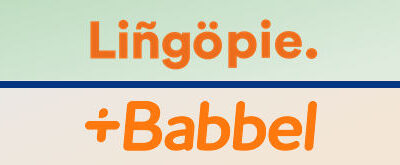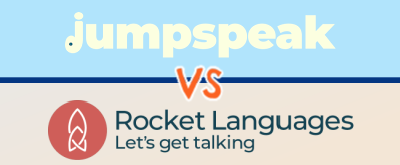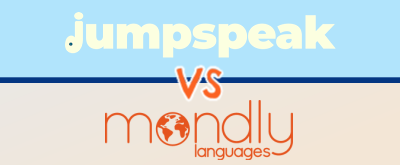When it comes to mastering a new language, both Pimsleur and Mango Languages offer unique approaches that cater to different learning styles. This article compares their features, methods, and effectiveness to help you decide which program best aligns with your language goals.
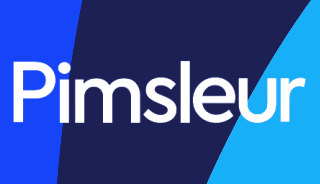
Free 7-Day Trial
Sign Up Today
|
$20/mo |
Pimsleur offers robust language learning courses that feature simulated conversations with fluent speakers, accurate speech software, and a diverse mix of practice drills and exercises. |

SALE: 10% Off
Applied In Cart
|
$12/mo |
Popular language program that includes several useful features and tools, though their courses overall are not as comprehensive as Pimsleur’s. |
Editor’s Choice

Pimsleur
- 50+ Languages
- Money Back Guarantee
Pros
- In-depth audio conversations featuring fluent speakers
- Listen to lessons on-the-go
- Accurate speech recognition software (Voice Coach)
- Diverse mix of practice drills
- Share account with up to three family/friends
Cons
- Slightly more expensive than Mango Languages
- Lessons are lengthy to complete
Why Pimsleur Is Better Than Mango Languages
Let’s start by discussing the major strengths of the Pimsleur program in relation to Mango Languages. That way, you can get a feel for whether Pimsleur is the right choice for your language learning needs.
Simulated Conversations
Unlike Mango Languages, which primarily focuses on teaching new words and phrases, Pimsleur takes a more immersive and interactive approach. Each lesson begins with a 30-minute audio exercise led by an English-speaking host who guides you through a conversation in your target language, breaking down the dialogue, context, and prompting you to participate in real-time (similar to Rocket Languages).
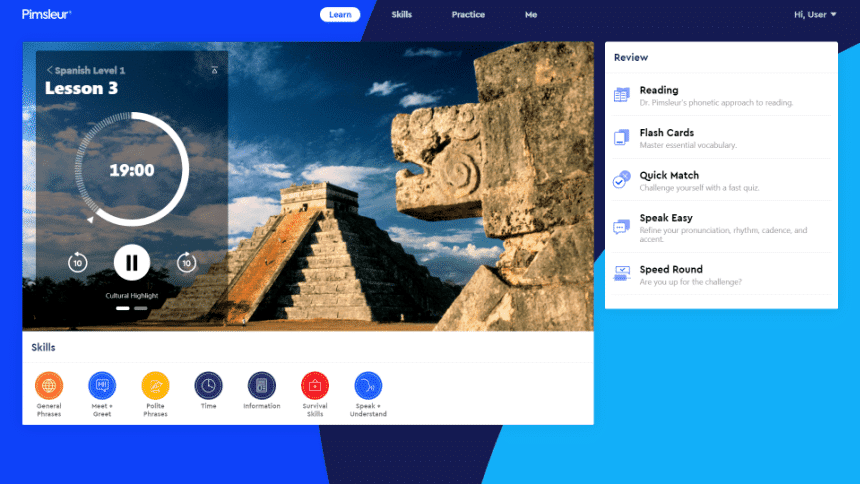
This structured engagement keeps you on your toes, requiring you to follow the scenario and respond at key moments, creating a simulated, real-world language experience. In our view, this dynamic participation fosters language recall under pressure, offering one of the best practices for developing real conversational skills.
Emphasis On Verbal Practice
Building on the previous point, Pimsleur’s focus on real conversational skills makes it an excellent choice for those aiming to speak confidently and quickly. With its emphasis on dialogue practice, Pimsleur is particularly suited for learners who want to reach an intermediate speaking level, enabling them to manage basic conversations in their target language.
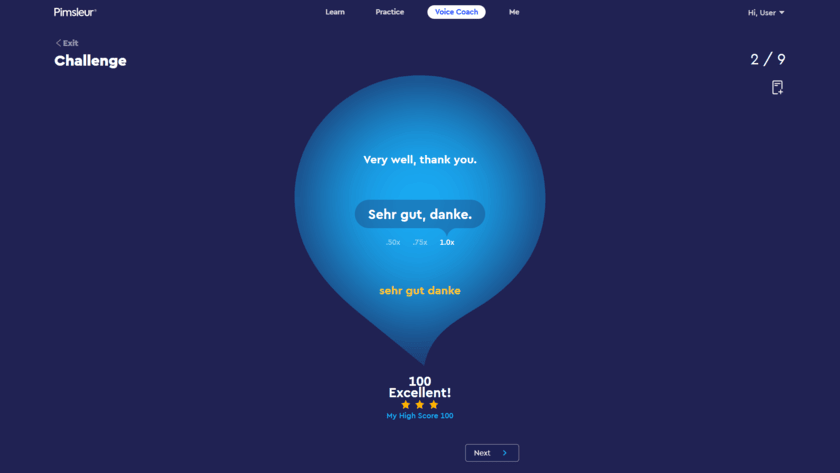
If you’re gearing up for an upcoming trip and want to chat with locals or impress new family members over the holidays, Pimsleur might be your best bet. Plus, Pimsleur’s Voice Coach feature uses speech recognition to provide immediate feedback on pronunciation, making it a powerful tool for refining your speaking skills.
Flexible Lesson Format
One of Pimsleur’s key strengths is that the audio-driven format in the first half of each lesson makes it ideal for learning while on the move. Whether you’re multitasking—doing chores, jogging, or commuting—you can complete lessons without being glued to a screen.
This flexibility offers a refreshing break from screen time, which can be especially welcome when tackling a new language. For added convenience, the Pimsleur app even includes a driving mode, allowing you to make the most of your commute or road trips. Overall, we really appreciate how Pimsleur’s setup makes language learning accessible anywhere.
Diverse Practice Drills
Following each Pimsleur audio lesson, you’re guided through a series of interactive drills that cover reading, writing, speaking, and listening. These activities reinforce the material from the audio portion, giving you a solid review through tools like flashcards, quizzes, pronunciation practice, and quick-paced games (similar to Babbel).
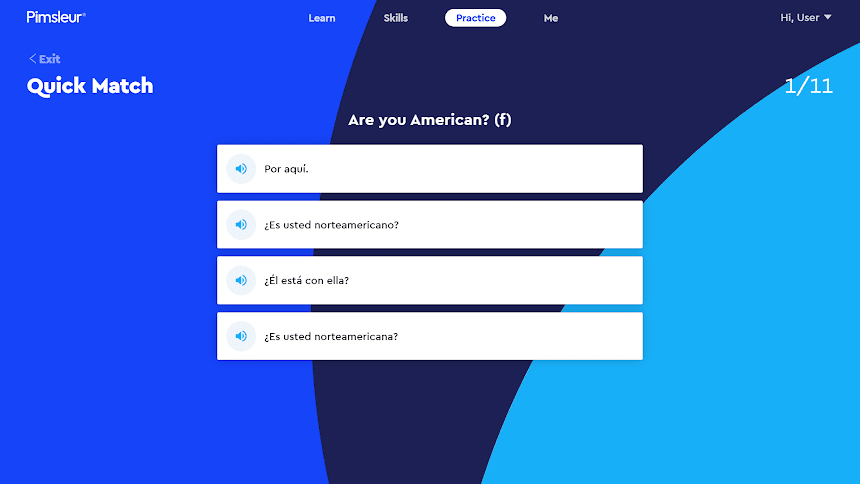
Each exercise takes about five minutes, making it easy to engage without feeling overwhelmed. We find that these drills not only boost the effectiveness of Pimsleur’s program, especially compared to Mango Languages, but also add an enjoyable variety to the learning process.
Account Sharing
Lastly, another standout feature of Pimsleur’s basic subscription is that it allows you to share your account with up to three friends or family members. This is a fantastic option, as each user has their own progress tracking, so everyone learns at their own pace.
If you’re planning to travel with friends or want to pick up a new language alongside family, Pimsleur makes it both easy and budget-friendly. The cost savings from splitting the subscription fee is a big bonus, too.

Mango Languages
- 70+ Languages
- Free Trial
Pros
- More affordable than Pimsleur
- Shorter lesson format compared to Pimsleur
- Unique voice analysis tool
- Detailed grammar explanations
Cons
- Language courses overall not as robust as Pimsleur’s
- Limited use of images, graphics, and video
- Limited conversational practice
- No account sharing
Why Mango Languages Is Better Than Pimsleur
Now that you have a good idea of what Pimsleur brings to the table, let’s discuss the major reasons you may want to consider using Mango Languages to help you learn a new language.
Pricing Comparison
Pimsleur offers two main subscription choices: the Premium plan at $20 per month for one language, and the All Access plan at $21 per month, which includes all 50+ languages in their catalog.
Mango Languages has similar options, with a Single Language plan priced at about $12 monthly, and an All Languages plan for around $20 per month, covering over 70 languages. For single-language learners, Mango is notably cheaper by about $8 per month, but for access to multiple languages, the price difference between the two programs narrows.
A key advantage of Pimsleur is that it allows up to three users per account, so if you’re learning with family or friends, you can share the subscription, bringing the per-user cost down to as low as $5, which is ideal for group learning.
Voice Analysis Tool
One major advantage Mango has is its voice analysis tool, which works a bit differently from Pimsleur’s. When you record yourself repeating words or phrases, Mango’s tool not only gives feedback on pronunciation but also provides a visual chart of your tone and inflection.
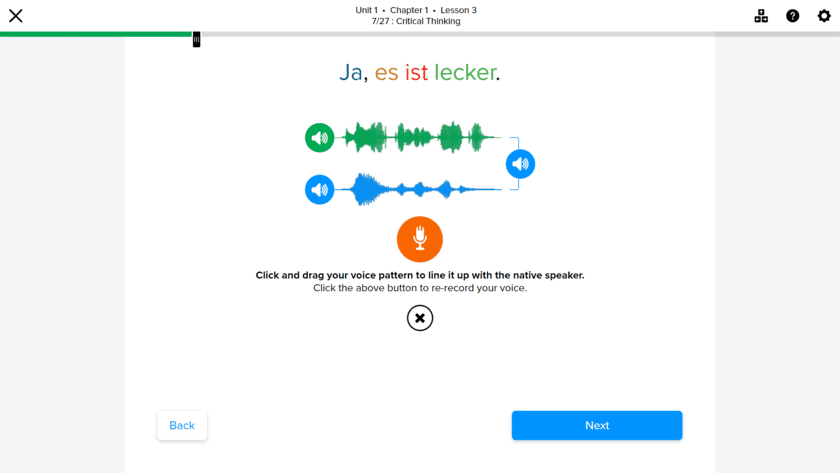
This visual feedback lets you compare your recording to a native speaker, helping you pinpoint adjustments in tone and cadence to improve your accuracy. We find this feature especially helpful for refining pronunciation and sounding more natural.
Though to be clear, the actual verbal drills that you are asked to complete with Mango Languages are more basic in nature in comparison to Pimsleur (and Rocket Languages for that matter).
Translation Toggle Tool
Another benefit of Mango is its skillful handling of the nuances between literal translations and the commonly understood meaning of phrases. When you’re learning a new language, phrases and expressions often don’t have direct word-for-word equivalents across languages.
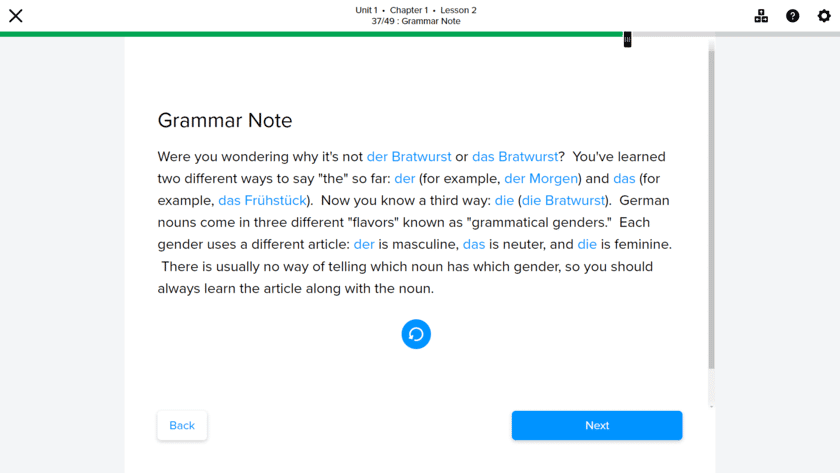
Often, there’s a similar way to convey the idea, but it doesn’t translate exactly. Mango’s helpful toggle feature addresses this by letting you switch between the phrase’s literal translation and its more commonly understood interpretation, making it easier to grasp these subtle yet crucial distinctions.
Specialty Courses
Finally, while this may not be a big consideration for everyone—since Pimsleur provides courses for over 50 languages—Mango does have a slight edge here.
Mango covers more than 70 languages and even offers specialized courses, like Argot French, Oktoberfest German, and Spanish for medical professionals.
So, if you’re interested in a less commonly taught language or want to focus on a unique area within a language, Mango might be a better fit for you.
Verdict: Which Language App Is Better?
After thoroughly testing both language programs, our team gives the edge to Pimsleur. Mango Languages does have some appealing features, such as their specialty courses and voice analysis tool, but ultimately, we believe Pimsleur is the stronger choice for reaching an intermediate level of fluency.
Ultimately, Pimsleur’s robust curriculum, and diverse exercises feel more developed than what Mango Languages offer. Our team especially values how Pimsleur emphasizes simulated, guided conversations as a core part of its lessons.
Both Pimsleur and Mango Languages have unique strengths, but Pimsleur is generally better suited for those seeking conversational fluency, thanks to its strong focus on guided speaking practice. Mango, on the other hand, offers a wider variety of languages and specialized courses, making it a great choice for learning niche or less commonly spoken languages.
The biggest difference between Pimsleur and Mango Languages lies in their teaching methods: Pimsleur emphasizes audio-based lessons and guided conversations to build speaking skills, while Mango uses interactive exercises with visual aids to help learners understand vocabulary and grammar. Additionally, Mango offers a larger selection of languages, along with specialized courses that target specific cultural contexts and professional needs.



